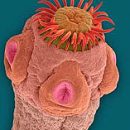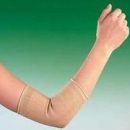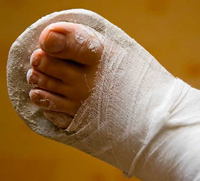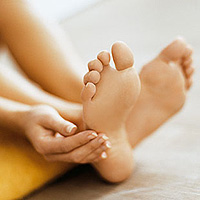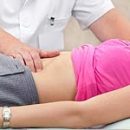Why crunch and sore joints in adults and children, what diseases should be thought about and what treatment will help cope with the crunch.
Content
- What warns the crunch in the joints
- Why the child is cristed joint
- How to treat crunch in the joints
 Crunch in the joints earlier was considered the problem of older people, but over time the joints began to crunch in young. The joints make cracks and in passive movement, and with active. Complete places of crunch becomes knee, crew, elbow and shoulder joints, as well as thigh joints, spine and lower jaws. Why crunch joints? Such a sound during the operation of the joint is due to the presence of gas bubbles in the synovial fluid capable of increasing the volume of the articular bag and burst. It looks like cavitation and does not pose a threat as such. Such crunches are painless and occur no more than once every 15 minutes. Deaf Clicks when driving in a joint can be provoked by friction of the tendon or bond on the bone. In addition to the norm, incomprehensible sounds in the joints can be symptoms and warn of serious diseases.
Crunch in the joints earlier was considered the problem of older people, but over time the joints began to crunch in young. The joints make cracks and in passive movement, and with active. Complete places of crunch becomes knee, crew, elbow and shoulder joints, as well as thigh joints, spine and lower jaws. Why crunch joints? Such a sound during the operation of the joint is due to the presence of gas bubbles in the synovial fluid capable of increasing the volume of the articular bag and burst. It looks like cavitation and does not pose a threat as such. Such crunches are painless and occur no more than once every 15 minutes. Deaf Clicks when driving in a joint can be provoked by friction of the tendon or bond on the bone. In addition to the norm, incomprehensible sounds in the joints can be symptoms and warn of serious diseases.
What warns the crunch in the joints
We will analyze more, the reason for which states can become crispy joints:
- Incongruence of articular surfaces — We are talking about the discrepancy of the articular surfaces to each other, which interferes with their smooth operation, as a result of which the articular noise appears.
- Turning joint and muscle inflammation. Large physical exertion can easily become the cause of future arthrosis of the joints.
- A sedentary lifestyle also contributes to the appearance of clicks when operating joints. In the absence of minimal physical stress, the articular device begins to atrophy and weaken, like muscles with tendons.
- Articular hypermobility. It is manifested by a weak joint and high flexibility: the joints are capable of painlessly disperse, but return to its original position already with a crunch. Hypermobility for the most part poses congenital anomaly and the threat of frequent dislocation.
- Diseases of the joints: arthritis, arthrosis, bursitis and tendinite. With regard to these states, the main satellites of the crunch in the joints are painful sensations and limitation of mobility. It is necessary to seek help to a rheumatologist, surgeon, traumatologist or arthrologist. Such symptoms can talk about the presence of a patient of deforming osteoarthrosis (chronic non-agile disease of the articular cartilage), arthritis (inflammatory disease of the joint), bursitis (inflammatory disease of the articular bag) and tendinitis (inflammatory tendons disease).
- Injuries and pathology of the development of tissues, organs and parts of the body can be the causes of the crunch and make it difficult to work joint.
- Excess salts contribute not only to the strengthening of bones, but also hardened the cartilage, which prevents the normal movement of the joints and causes crunch.
Why the child is cristed joint
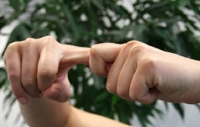 At all young children, the joints can crunch due to the immaturity of the ligorous muscular apparatus. If the kid has a concrete joint steadily, then it is better to contact an orthopedist for advice. Provice crunch in the joints in children can pathology of connective tissue (you need to turn to the cardiologist, due to the fact that heart diseases are common in children with such pathologies). Adolescent joints are crunchy (without pain) due to the immaturity of the binder and the articular apparatus and the unlimited growth of various organs and tissues.
At all young children, the joints can crunch due to the immaturity of the ligorous muscular apparatus. If the kid has a concrete joint steadily, then it is better to contact an orthopedist for advice. Provice crunch in the joints in children can pathology of connective tissue (you need to turn to the cardiologist, due to the fact that heart diseases are common in children with such pathologies). Adolescent joints are crunchy (without pain) due to the immaturity of the binder and the articular apparatus and the unlimited growth of various organs and tissues.
How to treat crunch in the joints
To begin with a product, it is necessary to identify the reason for the appearance of a crunch in the joints. The diagnosis of such states, as a rule, is to conduct X-ray research, tomography and laboratory testing of blood. To eliminate the symptoms, you need to unload crisp joints, the leafc under the direction of the specialist is welcome. Remove inflammation will help anti-inflammatory ointments, and restore cartilage — Glucosamine and Chondroitin sulfates.

